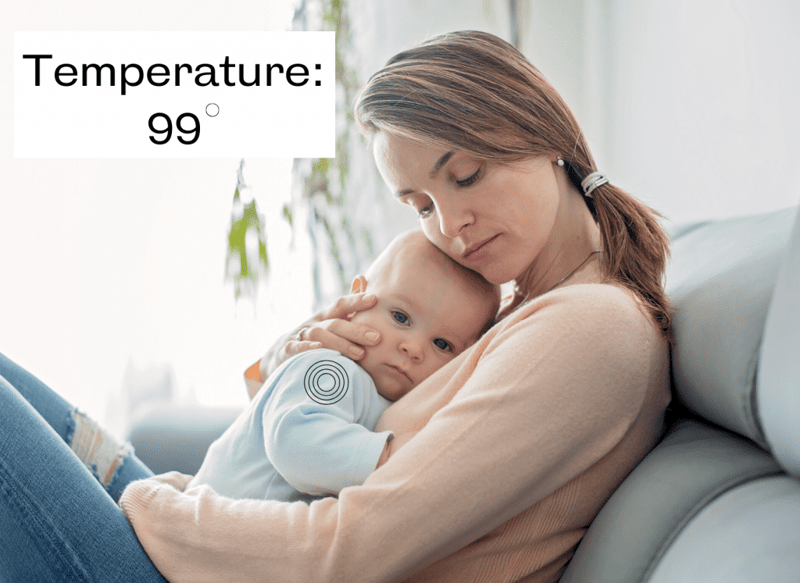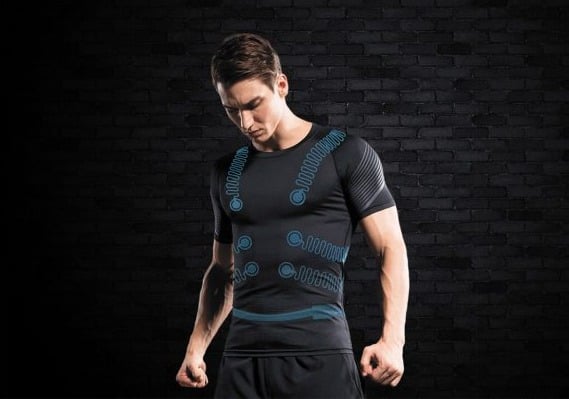Remote Health Monitoring Through Printed Electronics
Every day new uses for Printed Electronics in health monitoring and health care products, are being discovered. Patients now have the opportunity to measure their health vitals from remote locations, easing the stress of traveling to doctor and hospital visits, and minimizing opportunities for exposure to contagious environments. The truth is, printed electronics will the future of healthcare, especially when it comes to remote health monitoring!
You may ask: “What are printed electronics?” In short, printed electronics are functional products created using a set of printing methods, materials, and substrates They are relatively low-cost, most often flexible, sometimes stretchable, and, depending on the carrier substrate, can be applied in several different ways. Some printed electronics can be heat transferred or sewn to textiles, some can be applied directly to skin using a bio-compatible adhesive, others can be applied with pressure-sensitive adhesive, sonic welding, or otherwise mechanically fastened. Those that are printed on flexible substrates can be bent or curved to fit a specific article of clothing or body part. For more information on what printed electronics are, click here.
What Are Printed Electronics Capable of Monitoring Remotely?
Heart Rate/Respiratory Rate:
Printed biosensors can be used to monitor heart rate and respiratory rate from remote locations making it possible to keep tabs on patients’ status and activity outside of the typical hospital setting. Biosensors can be incorporated into articles of clothing, as well as directly applied to the skin, allowing for quick and continuous monitoring of at-risk patients. They can even help to detect health concerns prior to the onset of symptoms.

This can be especially helpful in several situations:
- In our Covid infected world, have the ability to pick up on changes in heart or respiratory enabling detection of the illness at an earlier stage.
- Printed biosensors announce abnormalities in heart rate and detect an oncoming heart attack allowing patients time to seek treatment prior to experiencing a live event.
- Biosensors can also be helpful in noticing discerning AFib in patients, which is an irregular, oftentimes rapid heartbeat that can cause poor blood flow throughout the body – indicating a need for treatment.
Temperature Monitoring:
Biosensors are capable of temperature monitoring. In fact, biosensors provide the ability to notice changes in body temperature prior to more obvious symptoms of illness.

Brain Activity Monitoring:
Biosensors also have the amazing ability to monitor brain activity and function. They can pick up slight abnormalities that normally might be overlooked. Biosensors also can monitor slight changes in anxiety or stress and provide the ability to know an anxiety attack is oncoming. Health monitoring has reached a new level of accessibility with the introduction of printed biosensors.
Muscle Activity:
Another unique attribute of biosensors is their capability of monitoring muscle activity or muscle inactivity. This means that during your timeframe of working remotely, you’ll have the ability to notice extreme inactivity and whether you’ve been sitting for an extended period of time, making you aware that you should take 5 minutes out of your day to get up and move.
For the extremely active person, biosensors can provide the ability to recognize muscle strain or muscle fatigue prior to a negative incident. Muscles can be afforded the well-needed break they may need and eliminate the painful soreness experienced due to overactivity.
Muscle activity monitoring can be essential to physical therapy patients or those recovering from surgery. The ability to measure muscle symmetry, monitor muscle function or muscle strain can help you and your team of physical therapists and doctors, recognize the strides being made throughout recovery.

Hydration Levels:
Printed Electronics Biosensors can be used to monitor hydration levels in the body. Dehydration can result in very serious side effects, but through the use of biometric sensors, hydration levels can be continually monitored. Biometric sensors monitor your body’s sweat levels and notice any abnormalities that may be present, such as dehydration, and can notify users at an earlier time so they are able to begin the hydration process earlier. This eliminates the potential of extreme dehydration in patients, athletes, or your everyday user.
When it comes to Printed Electronics, the unique applications and benefits for the end-user are infinite. There are so many different applications and uses of Printed Electronics just waiting to be discovered. If you have an immediate printed technology need or are interested in getting your next project started, reach out! We’ll be happy to help you.
 Meet the Author: Jaclyn King
Meet the Author: Jaclyn King
Jaclyn is a Marketing Communications Specialist on the BTI Team. She serves as the Content Manager, where she primarily manages social media channels, SEO, Public Relations, and website development. To get to know more about Jaclyn, check her out on LinkedIn!